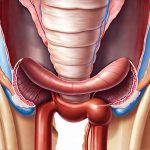Urinary function is often taken for granted until something goes wrong. Many individuals experience issues ranging from frequent urination and urgency to incomplete emptying and even incontinence. While infections, neurological conditions, and other physiological factors are common culprits, a frequently overlooked contributor lies in the intricate relationship between spinal and pelvic alignment and how it impacts the nerves and muscles responsible for bladder control. Optimal urinary flow isn’t simply about the bladder itself; it’s profoundly influenced by the structural support and nervous system regulation provided by the spine and pelvis. A misaligned spine or pelvic imbalance can directly compress or irritate nerves governing bladder function, restrict blood flow to key areas, and alter muscle tone – all of which can disrupt normal voiding patterns.
This article explores how proper spinal and pelvic alignment play a crucial role in healthy urinary flow and examines potential connections between structural imbalances and common urinary concerns. We’ll delve into the anatomy involved, the mechanisms through which misalignment impacts function, and ways to support optimal alignment for improved well-being. It’s important to note that this information is for educational purposes only and should not be considered a substitute for professional medical advice. If you are experiencing urinary problems, it’s vital to consult with a healthcare provider to determine the underlying cause and appropriate treatment plan. Understanding the connection between structure and function can empower you to take proactive steps towards better health, but always prioritize professional assessment and guidance.
The Anatomy of Urinary Control & Structural Influence
The process of urination is surprisingly complex, involving multiple systems working in harmony. It’s not just about the bladder filling and emptying; it’s a carefully orchestrated interplay between the brain, nerves, muscles, and pelvic floor. Sacral nerves – originating from the lower spinal cord (sacrum) – are central to this process. These nerves directly innervate the bladder, urethra, and surrounding pelvic structures, controlling both the storage and emptying phases of urination. The pudendal nerve, also crucial, impacts pelvic floor muscle function, which provides support for the bladder and urethra. Blood flow, delivered through arteries originating from the spine and pelvis, is essential to maintaining tissue health and proper function.
A healthy spinal curve provides optimal space for nerves to exit the spinal column without compression or irritation. Similarly, a balanced pelvis distributes weight evenly, minimizing stress on the pelvic floor muscles and supporting the bladder’s position. When there’s misalignment – whether it’s a forward head posture, scoliosis (spinal curvature), or pelvic tilt – these structures are compromised. A subluxation, even a minor one, can directly impact nerve function, leading to altered signaling between the brain and bladder. This disruption can result in symptoms like urgency, frequency, or incomplete emptying. Furthermore, structural imbalances can cause muscle imbalances; tight hip flexors, for example, can pull on the pelvis, affecting bladder support and contributing to urinary issues. Considering how spinal alignment impacts pelvic health is crucial for understanding these connections.
The pelvic floor muscles themselves are heavily influenced by spinal alignment. These muscles act as a sling supporting the bladder, urethra, and rectum. A misaligned spine often leads to uneven tension in these muscles – some may become overly tight (leading to restriction), while others weaken (contributing to leakage). This imbalance disrupts the delicate coordination needed for proper urinary control. Proper pelvic floor function is inextricably linked to spinal health, making holistic assessment and treatment essential.
How Spinal Misalignment Impacts Nerve Function
Nerves are incredibly sensitive to pressure and compression. Even subtle misalignments in the spine can create enough pressure on nerve roots to interfere with their ability to transmit signals accurately. This is particularly relevant for the sacral nerves, which directly control bladder function. When a nerve is compressed or irritated, it can lead to neuropathic dysfunction, meaning the nerve isn’t working optimally.
- Symptoms of nerve compression related to urinary issues might include:
- Increased urgency and frequency
- Difficulty initiating urination
- Incomplete emptying sensation
- Pelvic pain
- Weakness in pelvic floor muscles
The impact extends beyond just the bladder. Nerves are interconnected, so irritation in one area can affect function elsewhere. For example, compression of nerves in the lower back might also contribute to leg pain or numbness alongside urinary symptoms. Addressing the underlying spinal misalignment is often crucial for restoring nerve function and alleviating these issues. To support overall well-being, consider incorporating stretching and gentle yoga into your routine.
It’s important to understand that this isn’t about “pinching a nerve” in the dramatic sense; it’s about subtle interference with nerve transmission. This can be enough to disrupt the delicate balance required for healthy urinary control. Restoring proper spinal alignment through gentle, targeted therapies – often involving manual techniques and postural correction exercises – can create space around nerves and allow them to function more effectively.
The Role of Pelvic Tilt & Muscle Imbalance
Pelvic tilt refers to the angle of the pelvis in relation to the spine. There are three main types: anterior pelvic tilt (pelvis tilts forward), posterior pelvic tilt (pelvis tilts backward), and lateral pelvic tilt (uneven tilting). Each type can contribute to urinary problems through different mechanisms. Anterior pelvic tilt, for example, is often associated with tight hip flexors and weak abdominal muscles. This can pull the pelvis forward, compressing the bladder and urethra, and increasing pressure on the pelvic floor.
- Consequences of an anteriorly tilted pelvis:
- Increased stress incontinence (leakage during activity)
- Frequent urination due to a compressed bladder
- Lower back pain
Posterior pelvic tilt, conversely, can flatten the natural curve in the lower spine and lead to tight hamstrings and weak hip flexors. This also affects bladder support and muscle function. Lateral pelvic tilt creates asymmetry, putting uneven stress on the pelvic floor muscles and potentially leading to asymmetrical urinary symptoms. Understanding pelvic mobility routines can help address these imbalances.
Addressing pelvic tilt requires a multi-faceted approach. It involves identifying and correcting muscle imbalances through targeted stretching and strengthening exercises, as well as addressing any underlying spinal misalignments that may be contributing to the tilt. Techniques like myofascial release can help loosen tight tissues around the pelvis, while core stabilization exercises strengthen supporting muscles. Restoring pelvic balance is essential for optimizing bladder support and function.
Supporting Spinal & Pelvic Alignment: Practical Steps
While professional assessment and treatment are crucial for addressing significant misalignments, there are several steps you can take to support optimal spinal and pelvic alignment in your daily life. These include maintaining good posture while sitting and standing, incorporating regular exercise that strengthens core muscles and improves flexibility, and practicing mindful movement throughout the day. A helpful starting point could be exploring daily hip release habits to promote better pelvic flow.
- Ergonomic Setup: Ensure your workspace is ergonomically designed, with a supportive chair and monitor positioned at eye level to prevent slouching.
- Regular Movement: Avoid prolonged sitting or standing in one position. Get up and move around every 30-60 minutes.
- Core Strengthening: Incorporate exercises like planks, bridges, and bird-dogs into your routine to strengthen core muscles that support the spine and pelvis.
- Flexibility Training: Stretch regularly, focusing on hip flexors, hamstrings, and lower back muscles to prevent muscle imbalances. Yoga and Pilates can be particularly beneficial.
- Mindful Movement: Pay attention to your body’s alignment throughout the day. Be aware of how you’re sitting, standing, and moving, and make adjustments as needed.
These steps are not a cure-all, but they can help prevent further imbalances and support overall spinal and pelvic health. Remember that consistency is key. Small changes over time can have a significant impact on your well-being. Finally, if you suspect a spinal or pelvic misalignment may be contributing to urinary problems, seek the guidance of a healthcare professional for proper diagnosis and treatment. Addressing these structural factors can often play a vital role in restoring healthy urinary function and improving quality of life. Don’t underestimate the value of incorporating breathing and movement practices for daily bladder alignment.





















